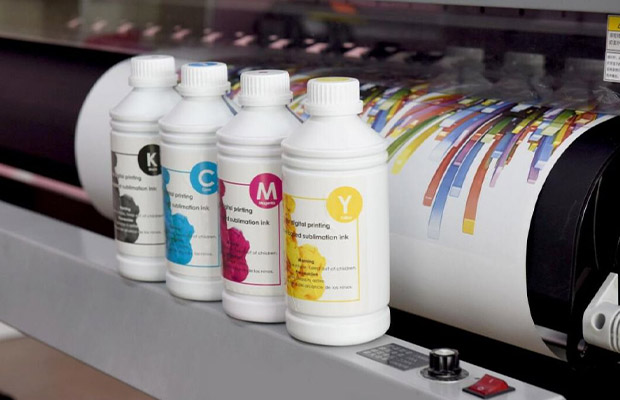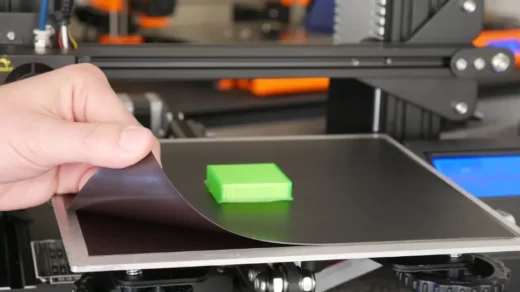With the aid of the most recent technology, you can design any object using a technology called printing that alters the appearance of an object through different designs.
Sublimation printing is a development that makes it possible to dye a variety of materials, including metals, clothing, and even mugs, tumblers, and phone cases.
Can you use sublimation ink for regular printing?
The straightforward reply is no. It is not a good idea to use sublimation for regular printing. First, most printers do not support sublimation ink.
Here are some details and facts about sublimation ink and printer, regular ink and printer, and their compatibility before we respond to your question. In order to uncover the mysteries it holds, let’s begin.
Table of Contents
Sublimation Printing: What Is It?
A digital printing technique called sublimation uses heat to transfer dye to paper or other materials. This method is adaptable and can be applied to a range of products, such as T-shirts, banners, and advertising materials. Here are five steps to get you started with sublimation printing:
- Select the appropriate software. Numerous software applications have been created especially for sublimation printing. Choose one with all the features you require and compatibility with your printer.
- Use a variety of software applications, such as Photoshop, CorelDraw, and Illustrator, to create your design. Enjoy yourself and be inventive!
- After creating your design, print it using a sublimation printer on special sublimation paper.
- Apply the dye to your material using a heat press. Depending on the material you’re using, you should adjust the amount of time and pressure you use.
- Once the dye has been applied, allow it to cool, then enjoy your one-of-a-kind creation!
Can Sublimation Ink Be Used for Regular Printing?
NO, sublimation ink cannot be used for standard printing. According to the explanation, “regular printers do not support sublimation ink, which defuses onto the paper using thermal/inkjet printing technology.”
In a broader sense, sublimation ink uses heat and dyes to transfer to paper using a heat press. On the other hand, regular printing uses digital technology, which necessitates that the ink remains liquid throughout the entire process, and the print is permanent on the paper, meaning that regular prints cannot be transferred.
Because of this, sublimation ink should only be used with printers that employ sublimation-compatible technology.
Why Sublimation Ink Is Not Good for Regular Printing?
Sublimation ink isn’t the best choice for standard printing for a number of reasons. Let’s examine the main reasons why sublimation cannot be used for inkjet or standard printing.
- The first point is that sublimation inks produce excellent results after shifting from a precise method. Because sublimation is a way of transforming a solid to a gas without passing through a liquid stage, using sublimation ink on regular paper, for example, may harm your product or cause the design you want to look less vivid.
- The majority of common printer functions and processes do not support printing with sublimation ink, which is another issue. Being incompatible with all printers and printing processes makes sublimation ink special. mainly due to the fact that using ink and a traditional printer doesn’t produce anything.
Sublimation Ink Vs Regular Ink
The most frequent use of sublimation ink is to print images or logos on t-shirts. However, it goes through a procedure that is very dissimilar from how regular ink operates.
Heat is used to pressurize the ink into a gas, which then bonds to the paper or fabric and adheres to it firmly. This procedure isn’t as difficult as it sounds, but sublimation paper and a compatible inking system are needed.
This is obviously not how regular ink would work. In order to be safe, avoid printing anything with your printer if it doesn’t support sublimation.
Can I Print Conventionally Using A Sublimation Printer?
Regular printing is not an option when using sawgrass because it only supports sublimation and sublimation as ink types. Similar to Epson’s conversion to sublimation, using regular ink afterward damages the ink used in the technology, leaving you with a non-operational box that can only leak ink.
Can You Use Regular Paper With Sublimation Ink?
Let’s discuss conventional papers and sublimation papers while using sublimation ink and sublimation printers. Can you use sublimation ink on regular ink? is another query raised in relation to the high cost of sublimation paper? Using the following justification, let’s respond to the query.
Until the ink is transferred to the final material, sublimation paper essentially serves as a carrier for the ink. The paper has special wax coatings and other fillers that prevent it from absorbing ink, allowing it to be converted into other forms as it is on the material.
A regular paper cannot transfer designs because it lacks coatings and pigments. As a result, the ink gets absorbed into the paper, preventing you from getting a complete design transfer and causing the colors to fade as well. As a result, sublimation ink cannot be printed on any regular paper.
There is, however, one exception. If you don’t want to continue transferring the design, you can use regular papers. indicating that sublimation ink can be used to print common documents. The true colors of the sublimation ink, however, only show up after pressing the design onto the material you wanted to sublimate, so the colors won’t be as vibrant.
Does Sublimation Work With Ordinary Ink?
You might be curious if there’s a chance of using regular ink for sublimation since you can’t use sublimation ink for regular ink. Evidently, there are none. Due to the differences in how different inks function and their pertinent compatibility with various technologies, regular ink cannot support sublimation, just as sublimation ink cannot support regular printing.
Materials Can Be Printed With Sublimation Ink
Wood
For sublimation printing, wood is a fantastic surface because the colors look natural and can be altered to match any decor.
Plastic
The fact that plastic doesn’t rust or corrode and that the colors are extremely durable makes it the perfect surface for sublimation printing.
Fabric Banners
Fabric banners are a fantastic surface for sublimation printing because they are strong and versatile enough to fit any event or occasion.
Polyester Fabric
Polyester fabric works best for sublimation printing because the colors are vibrant and the fabric doesn’t shrink when heated.
Ceramic Tile
Ceramic tile makes a fantastic surface for sublimation printing because it can be used to produce unique, enduring designs.
Metal
Metal is an excellent surface for sublimation printing because it doesn’t corrode or rust and the colors are very long-lasting.
Glass
Glass makes a fantastic surface for sublimation printing because the colors look stunning and can be altered to match any decor.
Stone
Due to its durability and capacity for bespoke design, the stone is a preferred surface for sublimation printing.
Read More:








